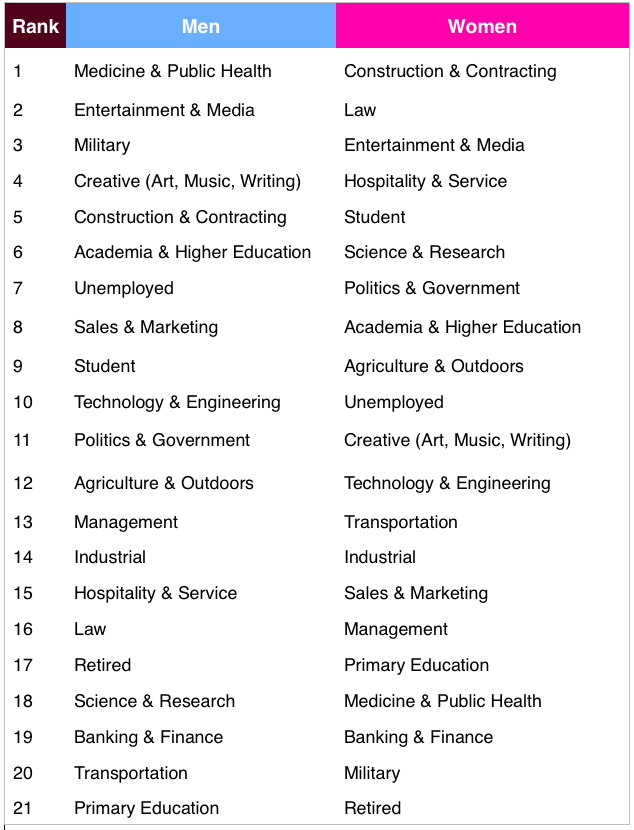
Data science projects often require statistical analysis. You must be able to calculate measures of central tendency and present data in a clear, logical manner. You need to be able to perform hypothesis tests on common data set, and also conduct rigorous correlation analysis and regression analysis. In order to do your analyses well, you should have a solid knowledge of R or Python. This article will provide information on data science statistics. However, a bachelor's level in statistics can be helpful if you're looking to become a data science scientist.
Inferential statistics
Inferential Statistics are statistical methods that use statistics to infer the characteristics of a population. Data scientists might randomly sample 11th-graders in a region to get SAT scores, and other personal data. The results of this analysis would then be used to make assumptions about the population as a whole. A consultant in politics might gather voter information from a precinct, and project the number who will vote for a presidential nominee and their preferences for a referendum question.
The ANOVA and t-test are two of the most popular inferential statistics. The statistical tests assume that the data are normally distributed and ranked. However, nonparametric tests do not require knowledge of the distribution of the data. Tests for nonparametric information may be used to check whether a given condition is more likely cause a specific response. This type of analysis is not always possible for behavioral studies with zoo animals.
Descriptive statistics
The purpose of descriptive statistics in data sciences can be described as studying the features of a dataset without going beyond the information in it. They manipulate dependent variables using independent variables. These are data types that can divide into groups. They may also be classified as nominal or ordinal. Continuous variables on the other side can take any value, and are therefore called continuous variables.

When it comes to presenting quantitative data in an understandable way, descriptive statistics can be a good option. A grade point average is a great example of descriptive statistics. The grade average (GPA), a composite of grades from many sources, is used to reflect the overall performance and achievements of students. This type is used to analyze the performance of individuals in particular fields. Actually, descriptive statistics can be divided into three categories: measures of central tendency and variability as well as dispersion.
Dimension reduction
Unsolicited increases in the dimensions of a dataset are directly linked to the fixation with measuring data at their granular level. This is not a new problem. However, it has become more important as more data is collected. An analyst can reduce the number of dimensions in a data set to improve their machine learning models. Here are some of the benefits of dimension reduction.
There are many ways to reduce dimensionality. There are two main types of dimensionality reduction techniques: feature selection and feature extraction. These methods can be used for noise reduction, intermediate steps, or as a final step in the data analysis process. Dimension reduction is a general technique for finding subsets from input variables. Dimensionality reduction strategies can be feature selection or feature extraction.
Regression analysis
Regression analysis allows companies to predict the future, or to explain a phenomenon. This analysis can help companies to determine how best to allocate resources to increase their bottom lines. Regression analysis determines the relationship between dependent variables and independent variables. However, it should be noted that a single outlier can affect the results of the analysis. To avoid such problems, the data scientist should choose a statistical model that is appropriate.
Both logistic and linear regression are two of the most commonly used types. Both logistic and linear regression can be used to analyze data. However, they have their own uses. There are many types of regressions available and each one has its own importance. Some are more appropriate than others. Here are some examples of common regression methods. Let's explore some of them. Let's take a look at some of them.
Predictive modeling

Predictive models are a common method in data science. They use large amounts of data and attempt to predict a person’s response to a treatment. This data can include patient's medical information, genetics, environment, and other relevant data. These models consider people as individuals, rather than as groups. Additionally, they might use consumer data for predictions, such as buying habits and preferences. Depending on the application, the predictive model may use different types of data than a credit card application.
While predictive models are useful in many ways, they can still fall short when it comes to accuracy. Some models can become inaccurate and overlearn. Overlearning happens when the algorithm is too dependent on data patterns and cannot predict with new data. Organizations should use holdout data to train predictive models. The holdout data set will help predict the model's accuracy.
FAQ
How long does a cyber-security course take?
You can expect to complete cybersecurity training courses in six to 12 weeks depending on your time and availability. If you are looking at a short-term course, then you may want to consider an online option such as the University of East London's Cyber Security Certificate Program, which meets three times per week over four consecutive weeks. If you have several months to spare, why not enroll in the full-time immersive program? This program includes lectures in class, assignments, and group discussion. These are all meant to give you a deep understanding of cybersecurity. The tuition fee covers everything, including accommodation, meals, textbooks, and IT equipment; this makes it easy to budget. Students will learn not only the basics of cybersecurity but also practical skills such penetration testing and network forensics. They also receive a certificate upon completion. The program helps students get started in cybersecurity careers and has helped hundreds of them secure employment in the field after graduation.
The best thing about a shorter course? It can be completed in less than two years. You will need to put more effort if you want to continue your training. You will likely spend the majority of your time studying but will still need to attend regular classes. An extended course will cover topics such vulnerability assessment, mobile device management, digital encryption, digital forensics, and malware. This route is possible, but you must dedicate at least six hours per week to your studies. You will also need to commit to regularly attending scheduled meetings, both in person and via online platforms such as Skype or Google Hangouts. These may be mandatory depending on where you live.
The length of your course will vary depending on whether you are enrolled in a part-time or full-time program. Part-time courses tend to last less than full-time programs, so you might not be able to see the entire curriculum. Full-time programs require intensive instruction, so they will be spread over several semesters. Whichever route you take, be sure to check that your course has flexible scheduling options so you can fit it into your busy life.
Which IT certification is the most lucrative?
There is no definitive answer to this question. The general consensus seems to be that Microsoft certifications tend to attract more money.
What are the next trends in cybersecurity?
The security industry is evolving at an unprecedented rate. New technologies are constantly being created, while old ones get updated and become obsolete. At the same time, the threats we face are constantly changing as well. Whether you're looking for a broad overview of what's happening today or want to dive deep into the latest developments, our experts have you covered.
Here you will find all the information you need:
-
The latest news about new vulnerabilities and attacks
-
The best practices for dealing with the most recent threats
-
This guide will help you stay ahead of the curve
There are many things that you can look forward too in the future. But the reality is that there is no way to predict what lies beyond. We can only plan for the future and hope to be lucky.
But if you are really curious about the future, all you have to do is look at the headlines. They tell us that the greatest threat isn't currently coming from hackers or viruses. Instead, it's governments.
Everywhere there is a government, they are trying to spy every bit of information on their citizens. They use advanced technology, such as AI, to monitor people's online activities and track their movements. They collect data from anyone they come across in order to build detailed profiles on individuals and groups. Because they consider privacy a hindrance for national security, privacy isn't important to them.
This power can be used to target specific people by government agencies. Experts believe that the National Security Agency may have used its power to influence German and French elections. While it's not known if the NSA intended to target these countries in any way, it seems logical when you think about this. If you want to control your population, then you must ensure they are not in your way.
This isn't an imaginary scenario. History has shown that dictatorships have been known for hacking into their opponents' phones and stealing their data. It seems as though there are no limits to what governments will do in order keep their subjects under control.
Even if surveillance isn't an issue at the government level, it might be a concern about corporate spying. There isn't any evidence that big business may be monitoring what you do online. Facebook tracks your browsing history, regardless of whether or not you have given permission. Google claims that advertisers don't have access to your data. However, no proof has been provided.
You need to be concerned about what can happen when governments get involved. However, you should also consider how to protect your self when dealing with corporations. You should learn cybersecurity if you plan to work in IT. By learning cybersecurity, you can help companies prevent access to sensitive information. You can also train employees to recognize potential phishing schemes.
Cybercrime, as it turns out, is the greatest problem facing society at the moment. Hackers, governments, criminals, and terrorists all work together to steal your personal information and destroy your computer systems. The good news is that there are solutions for everything. All you have to do to get started is to discover where to start.
How does cybersecurity differ from other fields?
Cybersecurity is different from other IT areas where you may have faced similar issues. Many businesses use databases and servers to manage their data. Perhaps you have even worked on a project that involved website design.
However, these types of projects aren't usually considered cybersecurity-based. While you could still use some principles of web development to solve problems, this would likely involve multiple people.
This is why you need to consider studying cybersecurity specifically. This includes learning how analyze a problem to determine whether it's due to vulnerability or something else. Understanding the basics of encryption will be a part of this. You will also need to be able to code well.
You will need to learn cybersecurity alongside your core subjects in order to be a cybersecurity specialist. But don't forget to keep up with your core subject.
As well as being able to handle lots of complex information, you'll need to understand how to communicate effectively. Strong communication skills are also required, both verbally and written.
Finally, it is essential to know the industry standards as well as best practices for your chosen career path. These are vital to ensure that your career is moving forward and not backward.
Which IT course would be best for beginners and why?
The most important thing when choosing an online course is to find a provider who makes you feel comfortable.
It is much easier to succeed when someone is confident and feels at home in a learning environment.
So make sure you choose a provider whose courses are well-designed and easy to use.
They should also have a strong support team to help you with any account issues.
You should read all reviews left by other students. They should inform you of everything you need to know about the course.
Don't rely only on their ratings. You can also read the comments to see how helpful this community is.
You don't need to pay for a course that doesn’t appear to be of benefit.
Are cybersecurity and math a lot?
It's an important aspect of our business, so we don't expect it to go away any time soon. But as technology evolves, we have to keep up with it and make sure we are doing everything possible to protect ourselves against cyber-attacks.
That means finding ways to make sure that the systems we use every single day are secure without worrying too much about the technical details.
This must be done while keeping costs under control. We are always looking for ways to improve how we manage these issues.
However, if we make mistakes, we may miss out on potential revenue, put our customers at risk, or even put their lives at risk. This is why it's important to make sure we are spending our time wisely.
When there are many other areas to focus on, it is important not to go over every aspect of cybersecurity.
So, we have an entire team dedicated to this issue. They are "cybersecurity professionals" as they know exactly what needs doing and how to put it into practice.
Can I study IT online?
Yes, absolutely! There are many online courses you can take. They usually last less than one week and are therefore not comparable to regular college classes.
You can adapt the program to fit your schedule. It is possible to complete most of the program in a few weeks.
You can even complete the course while traveling. All you need is a laptop or tablet PC and access to the internet.
Students choose to learn online for two main reasons. Many students, even those who are working full-time, still desire to improve their education. Secondly, so many options are available now that it's almost impossible to choose which subject to study.
Statistics
- The top five companies hiring the most IT professionals are Amazon, Google, IBM, Intel, and Facebook (itnews.co).
- The number of IT certifications available on the job market is growing rapidly. According to an analysis conducted by CertifyIT, there were more than 2,000 different IT certifications available in 2017,
- The top five countries contributing to the growth of the global IT industry are China, India, Japan, South Korea, and Germany (comptia.com).
- The median annual salary of computer and information technology jobs in the US is $88,240, well above the national average of $39,810 (bls.gov).
- The top five countries providing the most IT professionals are the United States, India, Canada, Saudi Arabia, and the UK (itnews.co.uk).
- The top five regions contributing to the growth of IT professionals are North America, Western Europe, APJ, MEA, and Central/Eastern Europe (cee.com).
External Links
How To
How do you start to learn cyber security
People who have been involved with computer technology since a very young age are likely to be familiar with hacking. They may not be aware of what hacking actually means.
Hacking refers primarily to the use of viruses, trojans or spyware to gain unauthorised access computers, networks and other systems.
Cybersecurity has become an industry by providing ways to protect against these attacks.
How hackers work can help you understand how to be safe online. Below are some resources to help you get started in your quest to learn more about cybercrime.
What is Cyber Security and How Can It Help?
Cybersecurity is the protection of computers from outside threats. Hacking your system can give someone access to your files, money or other information.
There are two types of cybersecurity: Computer Forensics and Computer Incident Response Teams (CIRT).
Computer forensics is the process of analyzing a computer following a cyberattack. Experts use this method to find evidence that can lead them to the perpetrator. Computers are tested for malware and other viruses to determine if they have been tampered with.
CIRT is the second form of cybersecurity. CIRT teams work together to respond to incidents involving computers. They use their expertise to stop attackers before they do significant harm.